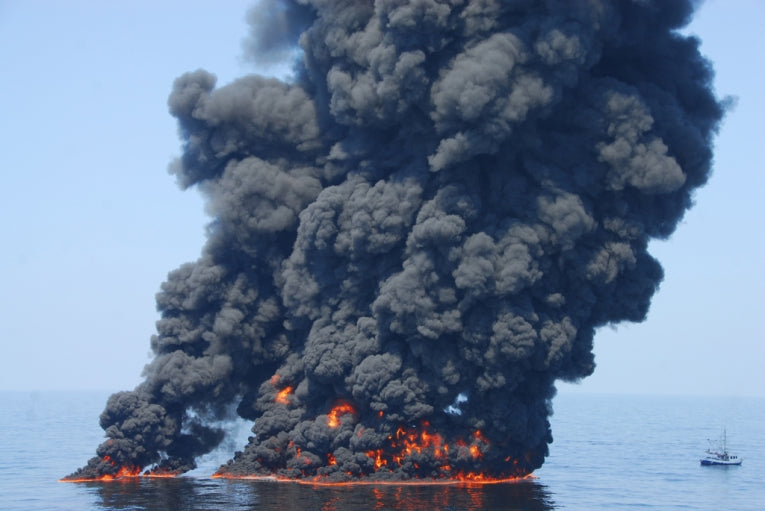Faced with the ecological disaster of the 2010 BP oil spill from the Deepwater Horizon, clean up experts used a 'least worst' option and reduced the amount of oil to hit the coastal ecosystems by burning floating oil. Now scientists from the National Oceanic and Atmospheric Administration (NOAA) have judged the atmospheric damage this burnoff caused.
Around a twentieth of the spilled oil was burned after the spill in a bid to protect the Gulf of Mexico's fragile ecology, and the NOAA was monitoring the smoke plumes from the air.
This was the first such survey taken and in research released this week in Geophysical Research Letters NOAA scientists report that the amount of black carbon, or soot, released by the burning was around the same amount as is normally generated by all shipping in the Gulf in the same nine week period.
Black carbon is a contributor to global warming as well as reducing air quality and causing health problems for those who breathe it in.
"Scientists have wanted to know more about how much black carbon pollution comes from controlled burning and the physical and chemical properties of that pollution. Now we know a lot more," said lead author Anne Perring.
Over the period of the controlled burning, around 1.4 to 4.6 million pounds of soot was pumped into the skies over the Gulf of Mexico. The soot particles were also found to be larger than is usual and because they rose higher into the atmosphere were likely to stay airborne longer and travel further before falling to earth.
"The size and makeup of the black carbon particles determine how fast the particles are removed from the atmosphere by various processes, which ultimately affects their impact on climate," says Perring.
Four percent of the burned oil's mass was turned to soot by the burning, a new discovery which will help clean-up experts decide when to use the tactic in future.
Top Image Credit: U.S. Coast Guard photo










